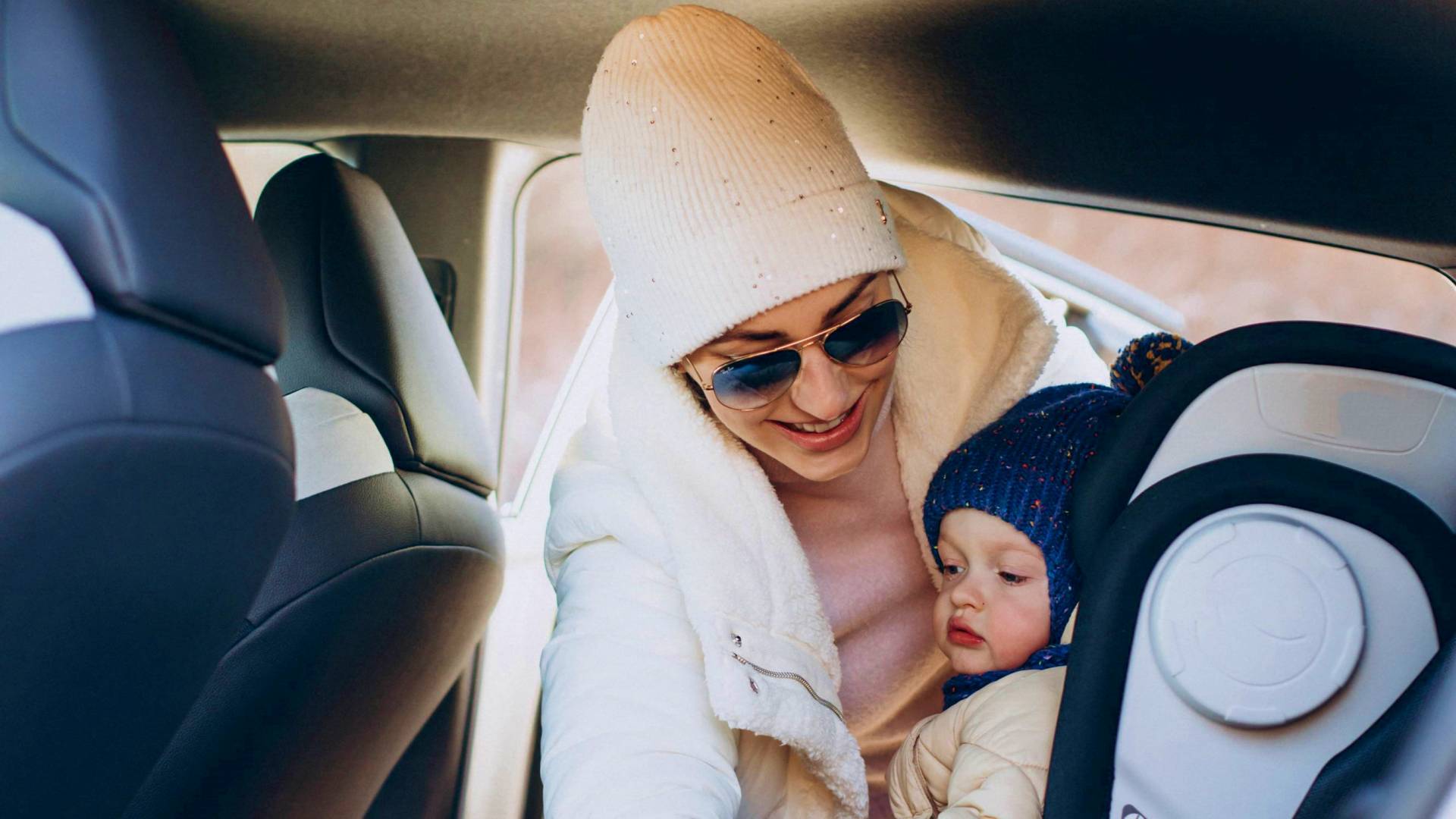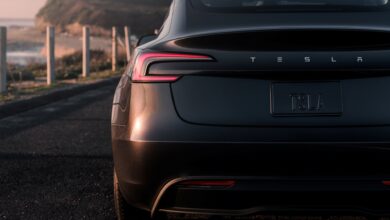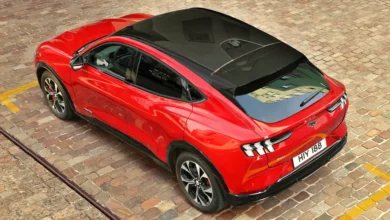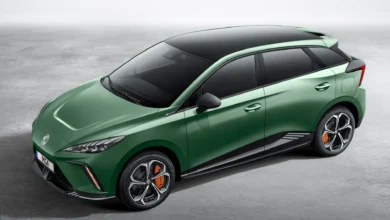
Taking a baby on a long car ride can be tempting, but it’s not always easy. Of course, the young family would like to visit relatives and present a little miracle, but a crying baby can get on the parents’ nerves. In this article, we reveal how the road trip with a small child on board is relaxed and safe.
Pros and cons of traveling with a toddler
First, the benefits of traveling with an infant on board: Newborns can make perfect travel partners. Once the children are a little older and able to talk, crying is the least problem parents have to endure on long car journeys. Young, growing children have an enormous urge to move and therefore usually sit restless and jittery in the back seat. Babies, on the other hand, usually sleep about 15 hours a day and do not yet have a day-night rhythm. Most of the time, the little one should sleep comfortably in their baby seat.
Nevertheless, such a trip is not necessarily stress-free for parents and children. Of course, some kids don’t like driving and scream all the time. In addition, the baby in the back seat can also be a dangerous distraction for the driver. The pacifier falls on the floor, and the toddler squeals – if you have to constantly look behind, you can easily cause an accident.
Of course, there are suitable cars with Isofix attachments or cars for families, but driving in the car is not necessarily comfortable and safe for newborns. You can find out why in the next section.
When can the newborn be taken into the car?
The most sensitive parts of an infant’s body initially are the neck and spine. At the beginning of life, parents have to support the head with their hands when lifting the infant, since the infants cannot yet hold their head upright by themselves. But what does that have to do with the car?

In short: sitting in an infant carrier is not ideal. The fact that newborns cannot hold their heads up independently can lead to breathing problems in the shell. In addition, due to the sensitive spine, the little one should be in a lying position most of the time – or be carried around ergonomically with a carrying aid – both of which are not fulfilled in the baby seat.
With car shells, the kids are usually in a semi-sitting position. The chest is compressed a bit. Breathing and the spine suffer equally from this. Newly born children should therefore only make journeys of around 30 minutes. For example, home from the hospital after the birth.
Pediatricians and midwives recommend not exposing the newborn to long car journeys in the first six weeks to three months. Shorter journeys of less than three hours are less of a problem, but long journeys to relatives can be quite dangerous.
Important tip: Many parents don’t just put their newborn in an infant carrier while driving. Many models can be attached to a pram frame so that parents often drive their child around in an unfavorable position even after a long journey. Carrying aids are always better for the baby. If you tie your toddler to your own body with a cloth, you carry it very close and safe with you – this also strengthens the early parent-child relationship.
Checklist: 6 points for driving with a baby
- Don’t ride too often: 2 to 3 hours in the baby seat is okay, but shouldn’t become a habit. The infant carrier should only be used as seldom as possible in the first few months.
- Breaks are useful on longer journeys: Ideally, the child should only sit in the baby seat for two hours at a time and then be taken out of the seat for about 30 minutes. During this car-free period, the children should be laid down and encouraged to move.
- Creating a cozy atmosphere: Window shades are useful little helpers so that the little one can sleep well during the day. Then it gets nice and dark and the child cannot be blinded.
- Adjust the temperature spontaneously: On longer car journeys, it makes sense not to put the child in a jacket, but to warm it up with a blanket. This can be easily removed if it gets too warm in the car.
- Reconsider the baby seat: As an alternative to the baby seat, a baby bath or baby cradle can also be bought for the car. In this seat variant, the infant lies completely upright.
- Consider alternative means of transport: Of course, the train journey will probably take longer than the car journey, but it is a safe alternative for the newborn. On the train, the baby can be laid flat or transported in a sling. For young families, IC and ICE trains even have special compartments for small children.
Provide entertainment and fun
If the little one is a bit older and ready for a long car trip on vacation, parents should provide entertainment. If the baby is no longer sleeping all the time, it is usually very active and does not want to be bored in the infant carrier. Toys that can be attached to the baby seat itself or the side of the car door are well suited. Then the child can play without the toy constantly falling to the ground.

If there are two of you in the car with the newborn, it makes sense for one passenger to sit in the back seat with the child. Babies need a lot of attention, especially at the beginning, and like to distract drivers when driving if nobody takes time for them.
If you drive alone with a child in the car, the baby seat can also be attached to the front passenger seat. But then the airbag has to be switched off.
The right timing is everything!
Sure, the newborn usually doesn’t have a fixed day-night rhythm and isn’t always hungry at the same time, but trends can still be identified. It makes sense to start driving after breastfeeding when you are full and satisfied. Of course, “nonsense hours” are less suitable. If the toddler is just fooling around, it is better not to start a long drive.
It can also make sense to keep an eye on the road conditions and not drive off at typical peak times. It is well known that small children, in particular, do not have to go to school and the car trip should therefore not necessarily fall during the typical summer holidays.
If the goal is not relatives, but a hotel with fixed check-in times, you should plan enough buffers. They would rather leave a little earlier and arrive too early than end up rushing. Breaks are important and should never be avoided for stress reasons. It is best to choose a few rest areas where you would like to stop and take a break before you travel.
Provide enough food
Especially kids who are still completely breastfed can become a problem when driving. While the car is rolling, breastfeeding is of course taboo, since the child would have to be unbuckled for this purpose. To still provide the baby with milk, the mother can either express a little milk before the trip or mix a bottle of milk.
In both cases, a bottle warmer can be useful. This can be connected to the cigarette lighter with an adapter and thus heat the bottle.
If the toddler traveling with you is a bit older and already used to baby food, jars of store-bought or homemade baby food are of course a must. Fruit purees in particular can also be enjoyed at room temperature.
Wrap regularly
Kids are not stupid and yes, they notice it immediately when they have wet their diaper. They usually draw attention to themselves with screams. The following applies to parents: change diapers regularly! This is also useful if a dirty baby seat is to be avoided. Babies sit with their full weight on the diaper, which means it can leak faster in the car – that’s a mess!
A waterproof changing mat is useful for changing nappies on the go. To make it last longer, a urine pad should be placed on top.
Pack your travel bag – these 10 products have to go in
The following small items should be packed in a bag and stowed in the driver’s cabin. Nobody wants to have to stop just to get some toys out of the trunk:
- toys
- spare pacifier
- Milk bottle and heater with adapter
- porridge glasses
- wet wipes
- diapers
- changing pad
- Change of clothes for the child
- Plastic bags for full diapers and dirty clothes
- travel pharmacy
travel pharmacy
Especially if you want to travel abroad with the baby, you should have a first-aid kit on board. It is not uncommon for small accidents to happen, especially on stressful car journeys, and someone quickly has to be treated or the bumpy car journey leads to nausea.
The following items should always be on board:
- Plasters and gauze bandages for minor injuries
- wound disinfectant
- clinical thermometer
- Fever suppositories or juice
- suncream
- Insect repellent and cooling gel for insect bites
- wound and healing ointments
- Medicines for flatulence, constipation, and stomach problems
- Medicines for diarrhea, nausea, and vomiting
- Electrolytes to compensate for mineral losses
- tweezers
- tick tongs
Once the drive is over, nothing stands in the way of a relaxing holiday.





